My Basic Core Exercises
If you have chronic low back issues, one of the most critical ingredients for feeling better and creating a more bombproof back is your core. A patient last week asked me which core exercises I would recommend as a home program. Here’s that list of the exercises I personally use. Let’s dig in.
What Is “The Core”?
These are muscles that stabilize the spine and help you move without pain. There are smaller and deeper core muscles like the Multifidus which help to stabilize one vertebra on the other. Then there are bigger superfical muscles that help you move and provide overall stability. The goal is to get both strong.
When to Use this Program
You should use this program in conjunction with your orthobiologic spine injection program. Please ask your doctor if you’re ready and when you should start. The goal is not to replace working with a trained physical therapist, but instead to provide a basic program for those patients who can’t get to PT or just want a home program.
The goal is to start slow with the most basic exercises and then build up as you go, getting into harder to perform exercises as you master the easier ones. If at any time these exercises flare up your back, then BACK OFF to the lower level exercises until you can tolerate the harder ones.
All of these start with 8-12 reps. If you can tolerate that, keep going up on reps until you hit 20-40 reps. Also, go slow and be deliberate. For example, most of these are three counts for the main movement. Why? You want to get to a place where you’re going slow and controlled enough with enough force so that you fatigue the area.
You should start these at least 3 times a week and once you get stronger, you can move to 4 or more days a week. Once you get your core turned back on and you’ve mastered everything, you can then move into the maintenance mode of a few times a week.
Core Exercises
The Basic 5
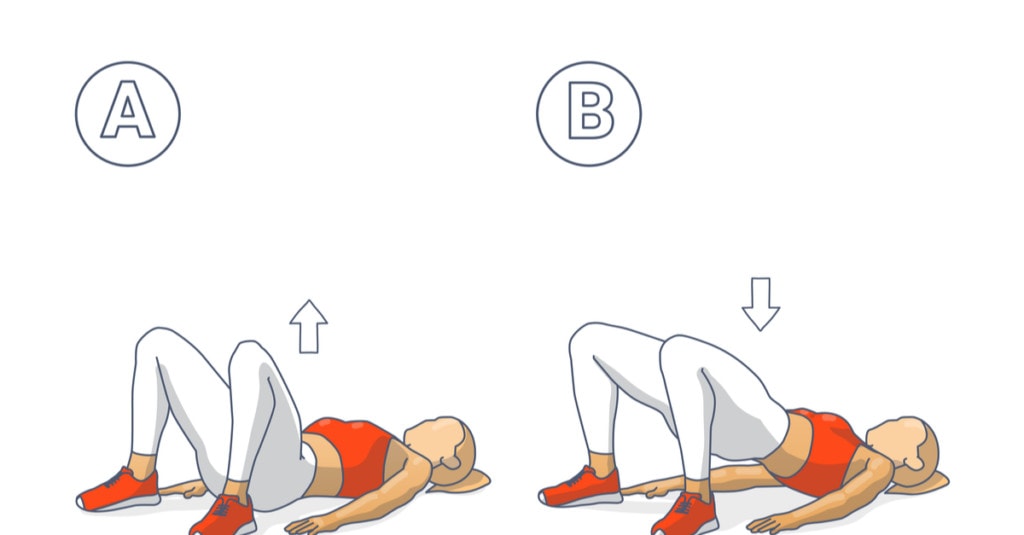
Credit: Shutterstock
This Glute Bridge is a great place to start. Your glutes are a key protector of the low back and unless you can get them strong, you’ll keep hurting yourself. Contract your glutes as tight as you can as you get to the top of the bridge. This is a three-count from bottom to top.

Credit: Shutterstock
This second glute exercise, known as a Donkey Kick, is also a great starter for your glutes. Again, you should squeeze your butt as hard as is comfortable when your kick is at its height. Keep your back straight and do not arch as you move your leg upwards. This is a three-count from bottom to top.
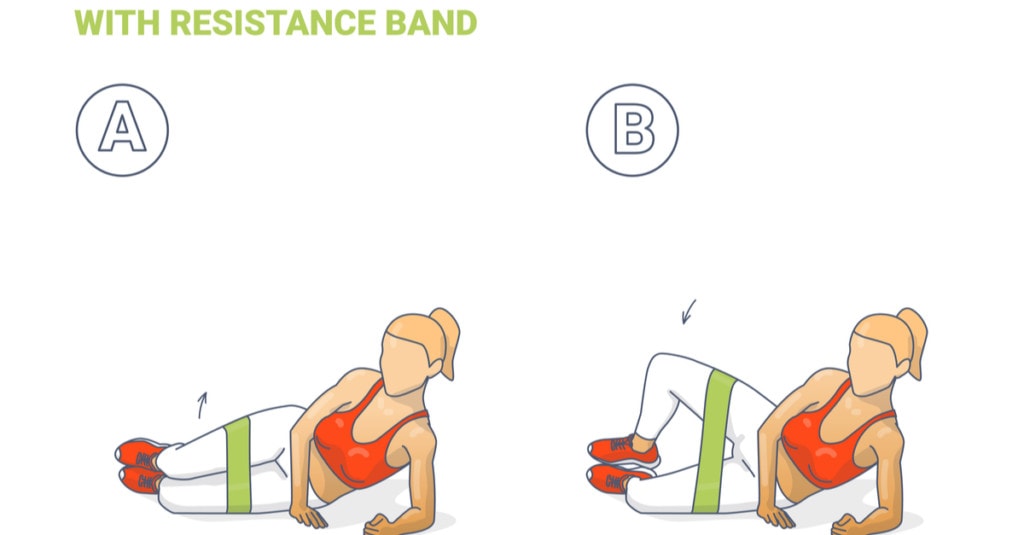
Credit: Shutterstock
This third glute exercise is called a Clamshell. Do not use a band to start and go slowly. Meaning from bottom to top this should take you a count of three.
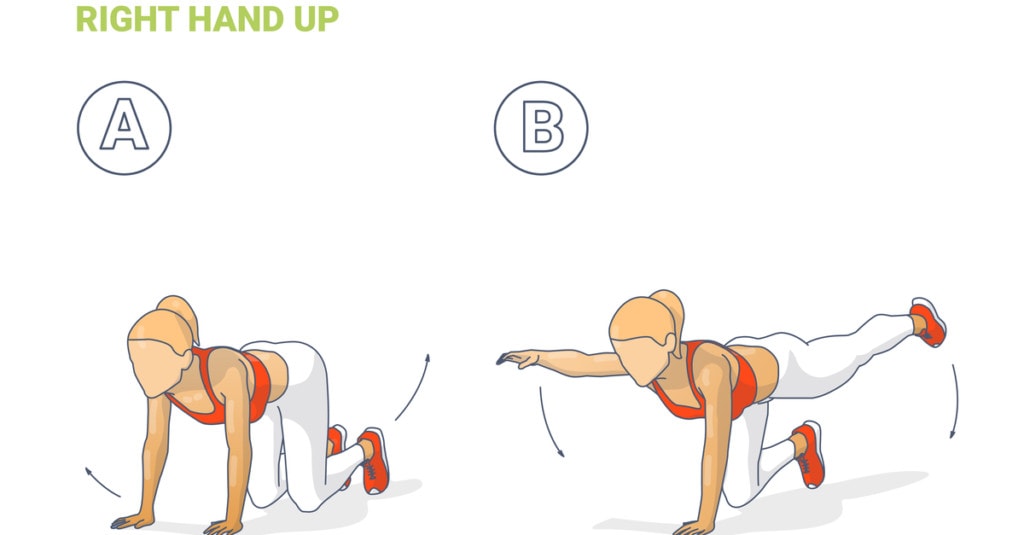
Credit: Shutterstock
Next up is a Bird Dog. The key here is to make sure your low back stays absolutely level and parallel with the floor. Meaning, don’t allow your hips to rotate. Again, this is a three count. Here. you’re trying to connect your arms and your gluts through the lat dorsi and thoracodorsal fascia. Do both sides (right hand up/left leg and left hand up/right leg) as one rep.
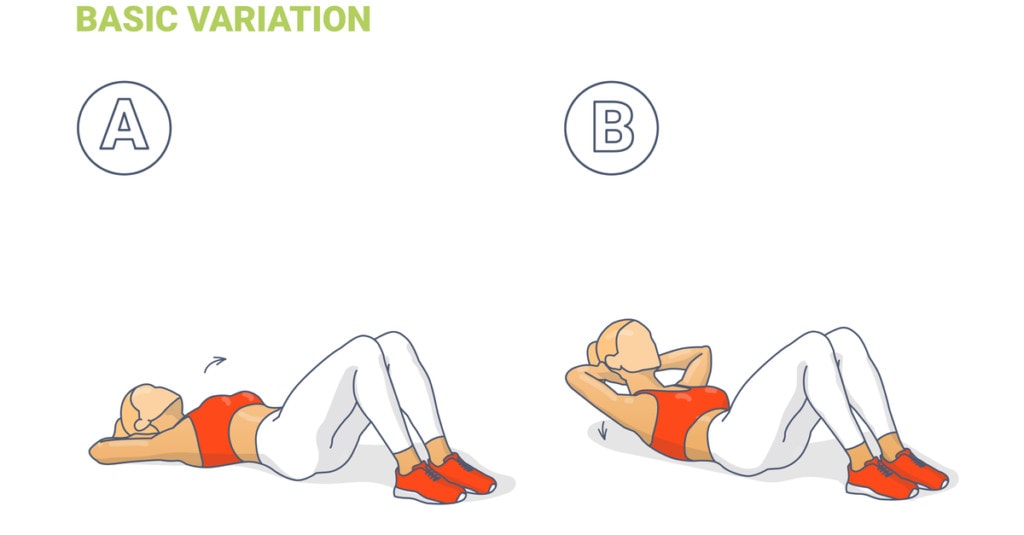
Credit: Shutterstock
Finally, to complete this first set, this is a Basic Crunch. If this hurts your back, then just work first on feeling your abs contract with one hand on your stomach without movement. As your back gets better and your abs come online again, you can add in lifting your head and upper back. Also, make sure that you’re working your abs and not just lifting your head and working your neck! This is also a three count.
Stay with the basic 5 exercises for about the first month. If you’re more advanced than this, you can move on more quickly, but if not, then you need to wake up your core over that first month before doing anything more difficult. Again, you want to start with 8-12 and then work up to 20-40 reps on each of these. You can only move onto the next level if these basic exercises don’t cause a low back flare-up.
The Next 5
Here’s we’re going to start adding in bands and getting more muscles engaged. When you add in bands, please buy a set that has light to moderate resistance. You need to start with a VERY LIGHT band to begin and only when you feel like you can tolerate those exercises with 20 or more with NO FLARE if your low back can you increase the resistance.
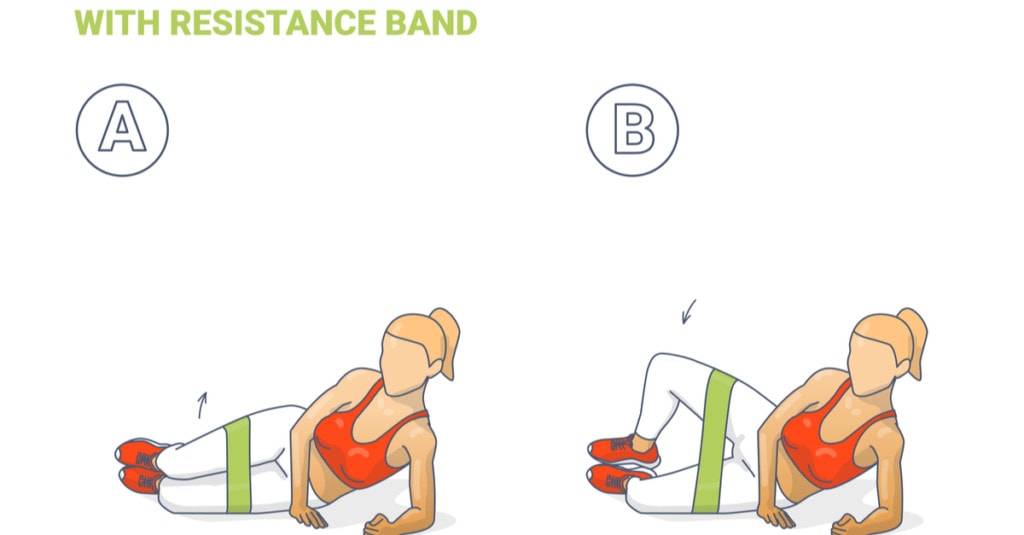
Credit: Shutterstock
This is the same Clamshell exercise as above, but with the band. This is also a three count. Make sure your spine doesn’t rotate and stays straight throughout.
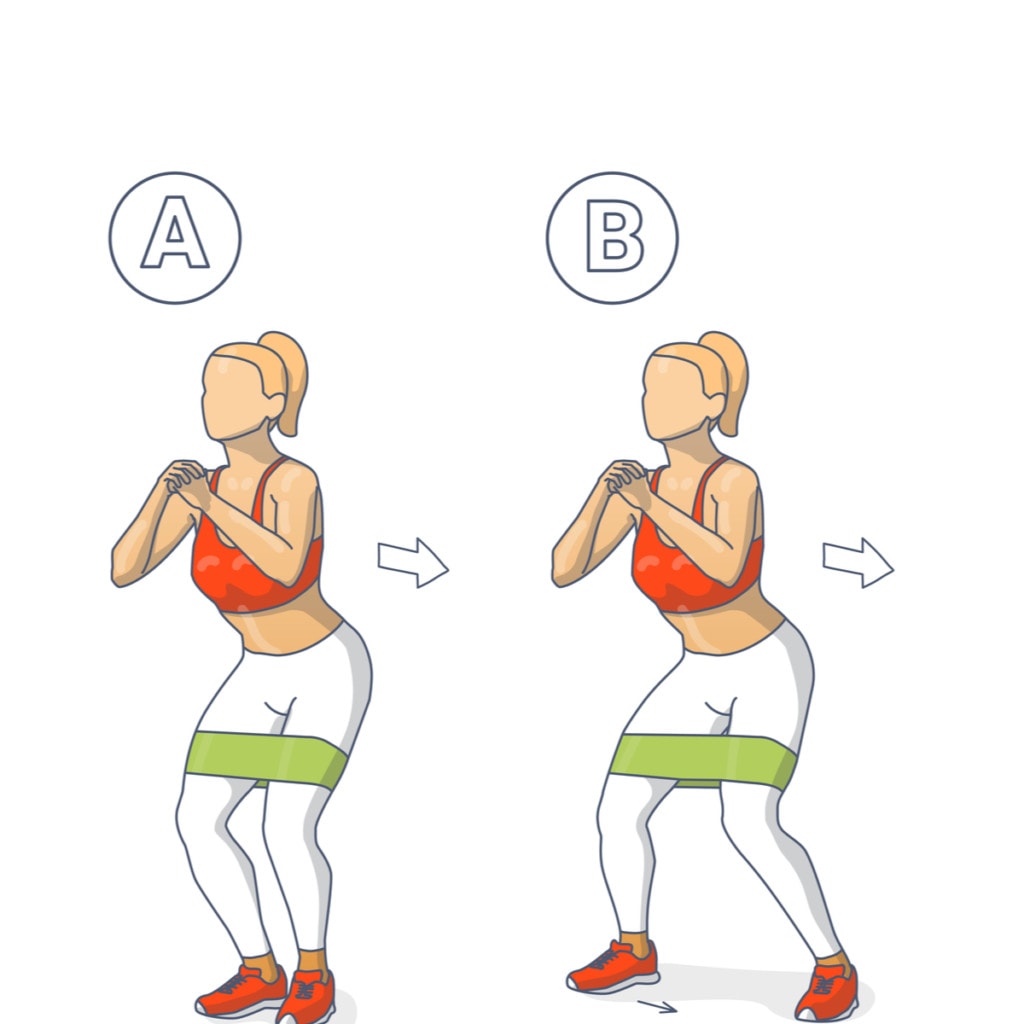
Credit: Shutterstock
For this next one, you’ll be weight-bearing (standing), so it’s critical that you don’t wrench your back here. The movement is low and from the hip, while keeping your abs tight and your spine straight. This is a three-count. You can make this more difficult (only when you have mastered this one), by moving the band lower down the legs.
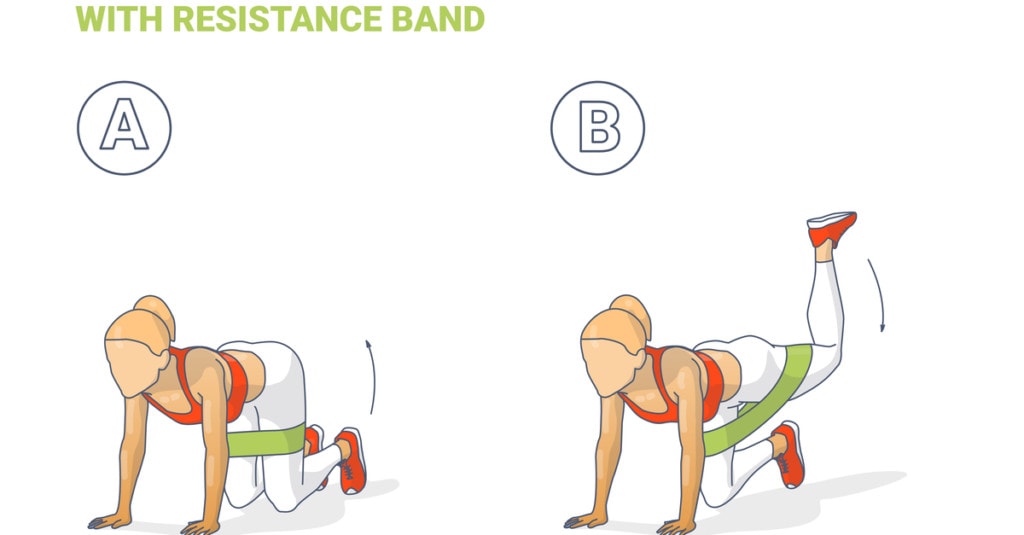
This is the same Donkey Kick as above, but here you’re adding a band. Outside of that, it’s identical.
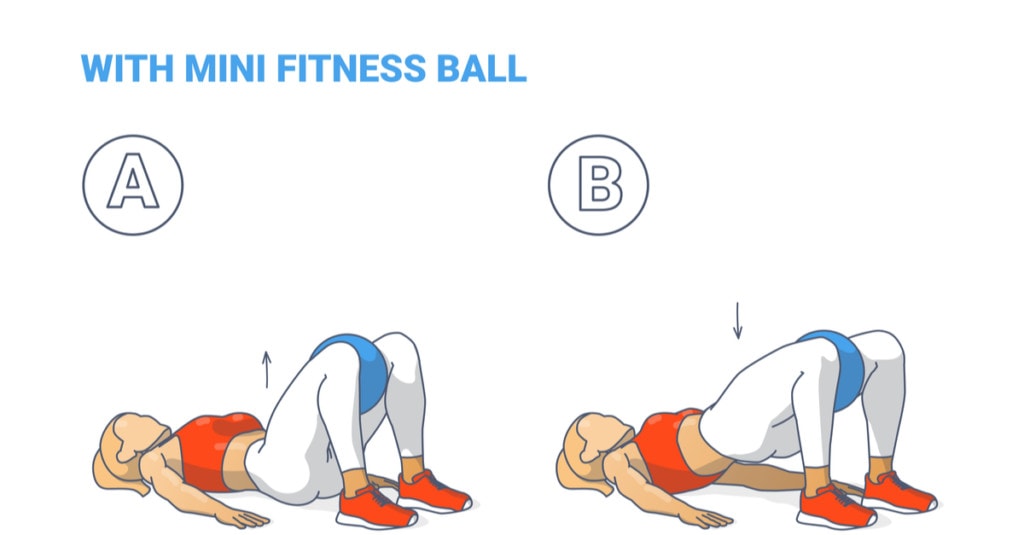
Credit: Shutterstock
This is just the same Glute Bridge above, now adding in the fitness ball. You keep the squeeze on the fitness ball all through the up and down motion.
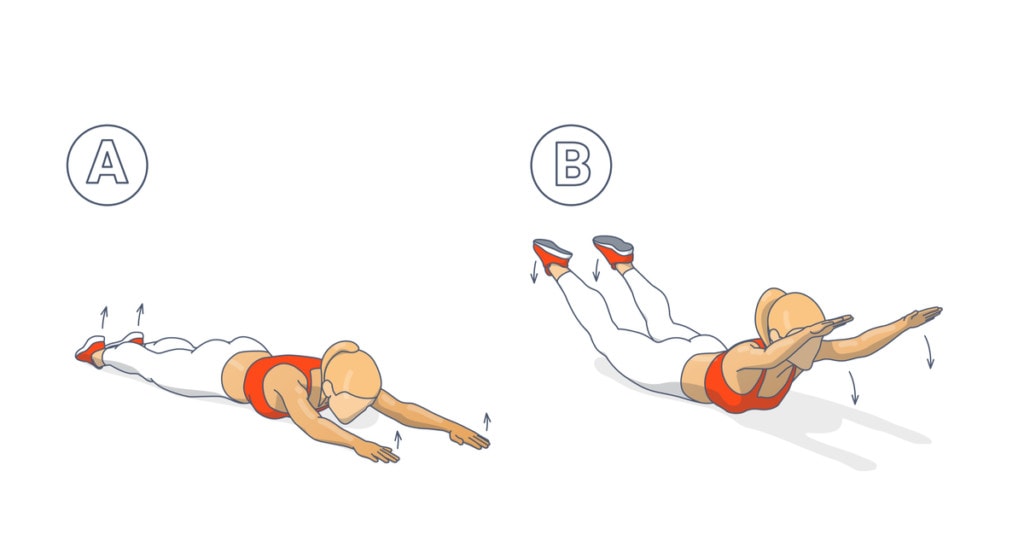
Credit: Shutterstock
Be careful with this one, as if you have a hard time tolerating extension, this one could flare up your back. Start slowly here, with the idea of initially just lifting your arms and legs without any extension of the low back. Once you get used to that you can add in more and more extension if you can tolerate it. If not, then don’t use extension here.
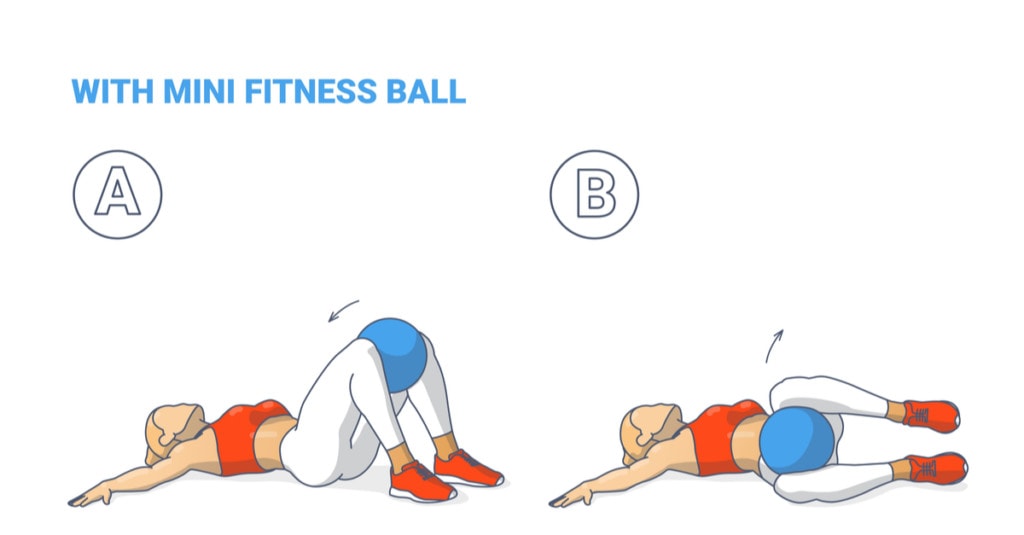
Credit: Shutterstock
This is the start of adding in that critical skill of mastering slow rotation. This is important for doing things in real life like opening a sliding door or pushing and maneuvering a shopping cart. Once you master this, the next exercise here is to use a long elastic band and attach that to a doorknob, and then while standing, slowly rotate:
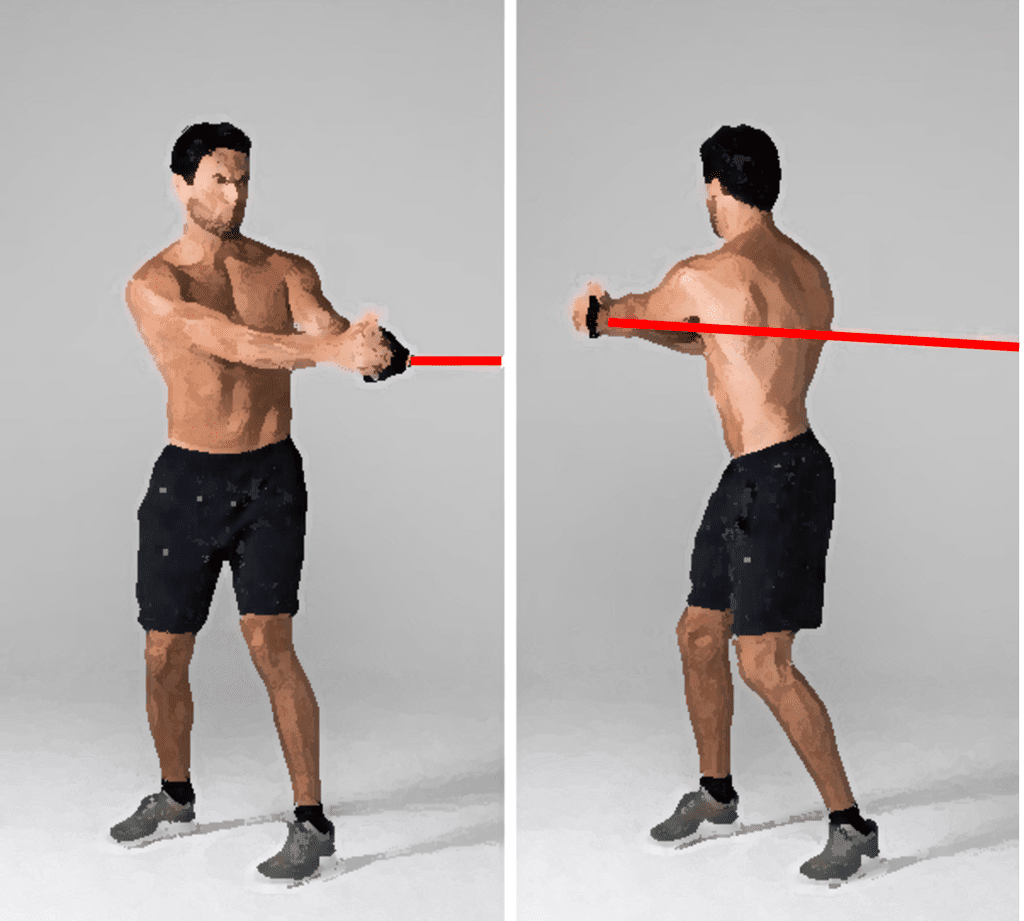
Do this with a three count with your abs sucked in (tight) and keeping perfectly straight. The KEY here is that most of this motion happens at the HIPS and you should feel your glutes working during the turn. If you feel it in your low back, you’re doing it wrong!
The Whole Program
Once you master all of these exercises over a few months, you should pick and choose the ones that are the most helpful for you, settling on 5 or 6 that can be done in a 10-20 minute period. You need to keep these up at least a few times a week (minimum) to keep these muscles as good as they can be. If at any time you get flared up, back off. I also can’t rule out that you may not need an injection tune-up here or there to get as strong as possible to protect your back.
The upshot? This is a basic program of core exercises that may take a while to master but realize that the goal is to make these your regular routine. Why? These are the muscles that will help make your back more bombproof. Our groundbreaking, precise orthobiologic spine injections are a great first step, but without strong muscles, your back will remain fragile!

If you have questions or comments about this blog post, please email us at [email protected]
NOTE: This blog post provides general information to help the reader better understand regenerative medicine, musculoskeletal health, and related subjects. All content provided in this blog, website, or any linked materials, including text, graphics, images, patient profiles, outcomes, and information, are not intended and should not be considered or used as a substitute for medical advice, diagnosis, or treatment. Please always consult with a professional and certified healthcare provider to discuss if a treatment is right for you.
